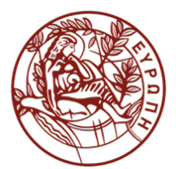Course Description - Course Content
Course description:
Computers (both autonomous as well as those embedded in other machines, such as cars, televisions, etc.), networks (like the Internet), and telecommunications (telephones, mobile devices, wireless, etc) are, nowadays, all made from microelectronic chips, which are digital, in their vast majority.
This course is about digital systems, the foundation of all modern information technology. See the course contents and goals, for more information.
Course content:
- Introduction: quick review of electric cirsuits; switches and logic operations (AND-OR-NOT); multiplexing and memory structure (initially of a ROM); combinations and decoding; reversing a relay-tree decoder to form a multiplexor; analog and digital systems, advantages and applications of digital systems; simple circuits using relays, feedback and memory.
- Combinational Circuits: AND-OR-NOT operations, truth tables, examples, logic gates and IC chips, Boolean Algebra, Venn diagrams, Karnaugh maps and simplification.
- Binary Integer Numbers and Additions, Subtractions: number of combinations and binary counting, unsigned integers, binary addition, combinational circuits for addition. Multiplication / division / remainder by powers of 2, i.e. bit-field selection. Signed integers: wrap-around, 2's complement representation, signed addition, the negative of a number, add/subtract circuit.
- Memory: feedback, unstable and bistable circuits, oscillators; latches (RS and D type), single-bit and multi-bit; RAM, word and bit organization, addresses and address decoding.
- Sequential Circuits: reusing hardware, need for timing signals, two-phase clocks, examples (counter, shifting, register transfer), master-slave flip-flops.
- Datapath: registers, multiplexors, ALU's, examples of simple datapaths; tristate drivers, buses; SRAM memories, write-control and output-enable, building larger memories out of multiple SRAM chips.
- A simple Processor: example datapath of a simple accumulator-type processor, machine and assembly language of the simple processor & example assembly programs: sequential code, branching and loops, indirect accesses and arrays.
- FSM and Control: finite state machines (FSM) and examples: traffic light controller, serial line receiver, the control FSM of the simple processor.
- Technology: integrated circuits, cost, speed, consumption, and factors affecting them.
Keywords: Digital Circuit, Computer Hardware

